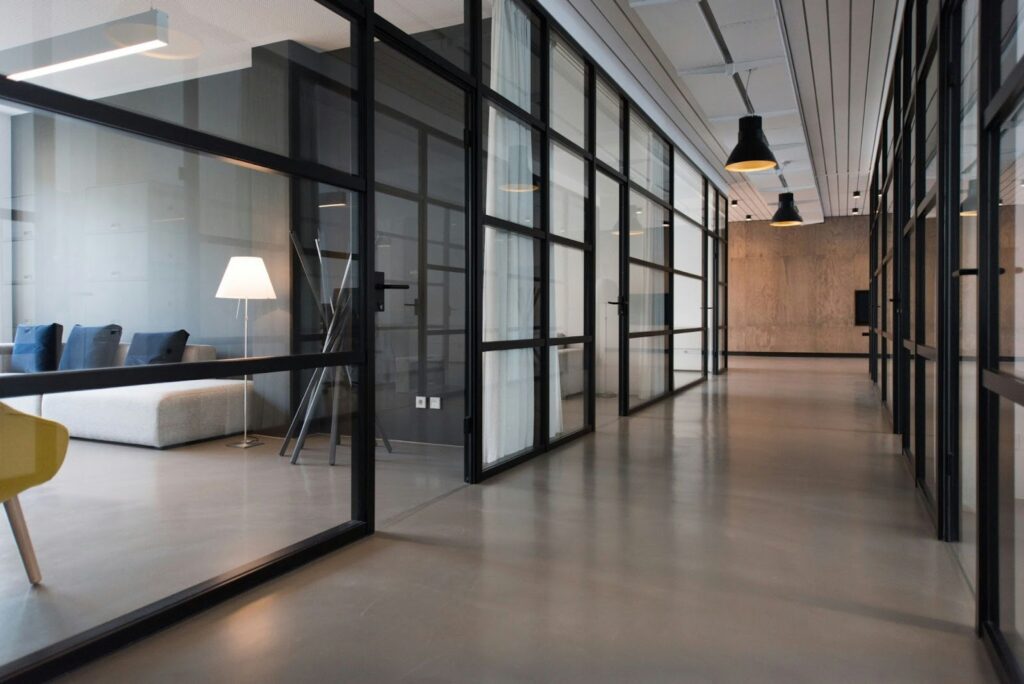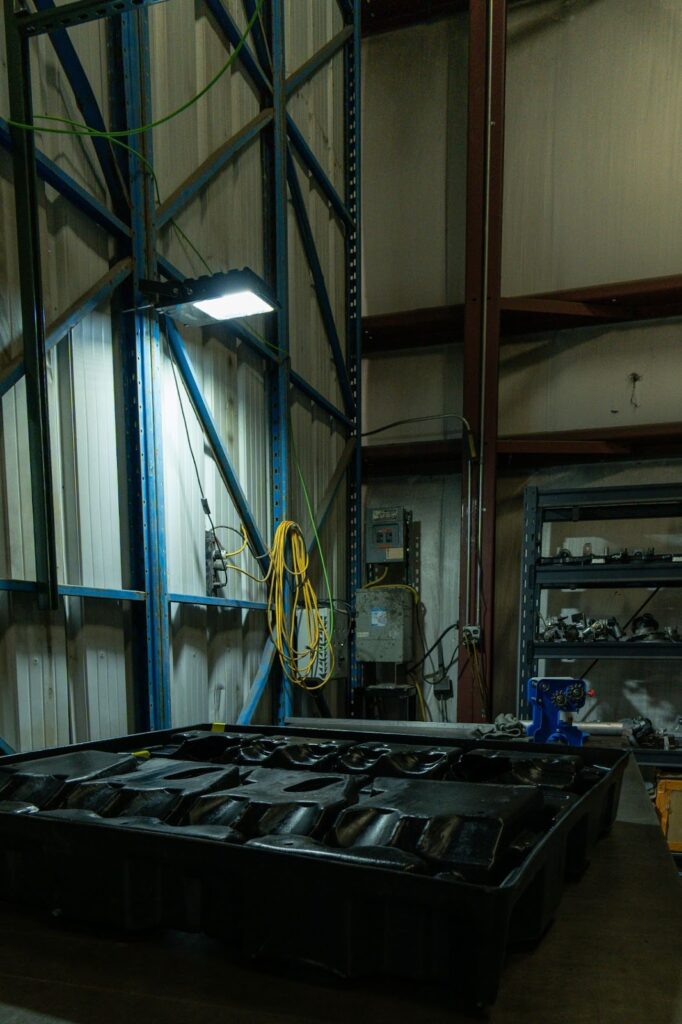In recent years, there has been a growing trend toward modular commercial buildings and its benefits. These innovative structures are revolutionizing the construction industry by offering a cost-effective and sustainable solution for businesses of all sizes.
The commercial modular construction industry in North America was valued at $12 billion in 2022, accounting for 6.03% of all new construction starts. Additionally, modular construction projects made up approximately 6.14% of the total square footage for new construction.
Whether you are considering expanding your office space or starting a new venture, understanding the ins and outs of modular commercial buildings is essential.
In this article, we will explore the different types of commericial modular buildings, benefits, construction processes, and future trends associated with these dynamic structures.
Table of Contents:
- Understanding Modular Commercial Buildings
- Benefits of Modular Commercial Buildings
- The Construction Process of Modular Buildings
- Maintenance and Durability of Modular Buildings
- Future Trends in Modular Construction
- Conclusion
- Frequently Asked Questions

Understanding Modular Commercial Buildings
Definition and Key Features
Modular commercial buildings, also known as prefabricated buildings, are a modern construction solution that offers efficiency and flexibility. These structures are built off-site in a controlled factory environment, utilizing standardized modules or sections.
The precision and quality control in a factory setting ensure that each module is crafted to exact specifications before being transported to the construction site for assembly. This method of construction not only reduces on-site labor and material waste but also accelerates the overall building process.
One of the key features of modular commercial buildings is their adaptability. The modules are intricately designed to fit together seamlessly, allowing for easy customization and expansion in the future.
This flexibility is particularly beneficial for businesses that anticipate growth or changes in their spatial needs over time.
Types of Modular Commercial Buildings
Modular commercial buildings encompass a wide range of applications and designs, catering to diverse industries and purposes. Some of the common types of modular commercial buildings include:
- Office spaces
- Retail stores
- Healthcare facilities
- Education centers
- Restaurants
Each type of modular commercial building is tailored to meet specific requirements unique to its industry. For example, healthcare facilities may require specialized features such as infection control measures, while educational centers may prioritize open, flexible spaces to accommodate various learning activities.
The adaptability of modular construction allows for these specific needs to be seamlessly integrated into the design and layout of the building.
Furthermore, the design possibilities with modular commercial buildings are virtually limitless. From sleek, modern office spaces to cozy, inviting restaurants, the modular construction method offers architects and designers the creative freedom to bring their visions to life.
The ability to combine different modules, finishes, and architectural styles provides businesses with a unique opportunity to create a space that not only meets their functional requirements but also reflects their brand identity and values.
Benefits of Modular Commercial Buildings
Cost Efficiency
One of the primary advantages of modular commercial buildings is their cost efficiency. The controlled factory environment optimizes the use of materials, reduces waste, and allows for bulk purchasing, resulting in significant cost savings.
Additionally, the streamlined construction process and shorter build time contribute to reduced labor costs.
Moreover, modular construction often involves the use of standardized components, which can lead to additional cost savings. These standardized modules can be easily mass-produced, driving down manufacturing costs even further.
The cost efficiency of modular commercial buildings makes them an attractive option for businesses looking to maximize their budget without compromising on quality.
Did You Know?
Modular commercial buildings are generally 20–30% more affordable than traditional construction costs. This cost-effectiveness makes modular buildings a smart solution for many businesses, offering a balance of quality, efficiency, and affordability.
Time Savings
Compared to traditional construction methods, modular commercial buildings offer substantial time savings. The off-site fabrication of modules and parallel on-site preparation ensure that construction can proceed swiftly.
This greatly reduces project timelines and allows businesses to occupy their new space in a fraction of the time.
Furthermore, the controlled factory environment in which modular buildings are constructed helps to minimize weather-related delays.
Since the assembly of modules is not dependent on on-site weather conditions, construction can progress consistently regardless of external factors. This reliability in scheduling contributes to even greater time savings for businesses in need of quick occupancy.
Environmental Impact
Modular commercial buildings are environmentally friendly alternatives to conventional construction. The controlled factory environment promotes efficient resource utilization and waste reduction.
Additionally, the ability to disassemble and relocate modular buildings further minimizes environmental impact, making them a sustainable choice for businesses.
Furthermore, the design flexibility of modular buildings allows for the incorporation of eco-friendly features such as energy-efficient systems, green roofs, and sustainable materials.
This focus on sustainability not only benefits the environment but also enhances the long-term operational efficiency of the commercial space, reducing energy consumption and operating costs over time.
Did You Know?
Modular construction can reduce construction waste by up to 83.2%, making it a more sustainable option.
The Construction Process of Modular Buildings
Design and Planning
Before the construction process begins, careful design and planning take place. This involves collaborating with architects, engineers, and designers to create the optimal layout and functionality for the modular commercial building.
A comprehensive plan includes considerations for aesthetics, functionality, and compliance with building codes and regulations.
During the design and planning phase, sustainability and energy efficiency are key considerations. Designers may incorporate eco-friendly materials, energy-efficient systems, and renewable energy sources to reduce the building’s environmental impact.
Additionally, factors such as natural light, ventilation, and thermal insulation are carefully evaluated to enhance the building’s comfort and efficiency.
Off-Site Construction
Once the design is finalized, the fabrication of modules takes place in a controlled factory environment. Skilled craftsmen assemble the structural components, install electrical, plumbing, and HVAC systems, and apply finishes to create a high-quality module.
The use of advanced technology and stringent quality control ensures that each module meets industry standards.
Off-site construction offers numerous benefits, including accelerated project timelines and reduced material waste.
By building modules in a factory setting, construction is not delayed by weather conditions, and materials can be optimized for efficiency.
Quality-control measures are also more easily implemented in a controlled environment, leading to a higher level of precision and consistency in the construction process.
On-Site Assembly
After the completion of off-site construction, the modules are transported to the construction site for assembly. Skilled workers erect the modules, interconnecting systems such as electrical and plumbing, and ensure structural integrity.
The seamless integration of modules results in a fully functional commercial space ready for occupancy.
On-site assembly requires careful coordination and expertise to ensure that modules are aligned correctly and interconnected seamlessly.
Project managers oversee the assembly process, coordinate the delivery of modules, and manage on-site logistics to maintain project timelines.
Collaboration between on-site workers and off-site manufacturers is crucial to ensure a smooth transition from fabrication to assembly, ultimately leading to the successful completion of the modular building.

Maintenance and Durability of Modular Buildings
Lifespan and Durability
Modular commercial buildings are designed to withstand the test of time. The use of high-quality materials, rigorous construction standards, and adherence to building codes ensure their durability and longevity.
When properly maintained, modular buildings have a lifespan that can rival traditional construction methods.
One key factor contributing to the durability of modular buildings is the controlled environment in which they are constructed. Unlike traditional construction sites, where weather and other external factors can impact the building process, modular buildings are assembled in a climate-controlled factory setting.
This controlled environment helps to prevent issues such as warping or moisture damage to materials, leading to a more durable end product.
Maintenance Requirements
Maintenance requirements for modular commercial buildings are similar to those of traditional buildings. Routine inspections, repairs, and upkeep of electrical, plumbing, and HVAC systems are necessary to ensure optimal performance.
The advantage of modular construction is that individual modules can be easily accessed and replaced, minimizing disruptions and reducing maintenance costs.
In addition to regular maintenance tasks, modular buildings offer the flexibility to easily incorporate upgrades and modifications.
As businesses evolve and grow, modular structures can accommodate changing needs. Whether it’s adding new office spaces, upgrading technology infrastructure, or implementing energy-efficient solutions, modular buildings offer the benefits of easy modification compared to traditional construction methods.
Check out: Care And Maintenance Tips For Your Steel Building
Future Trends in Modular Construction
Technological Advancements
As technology continues to advance, so does modular construction. Innovations such as Building Information Modeling (BIM) and 3D printing are shaping the future of modular building design and fabrication. These advancements improve accuracy, enhance customization options, and reduce production time.
Furthermore, the integration of Internet of Things (IoT) devices within modular buildings is revolutionizing the way we interact with our built environment.
IoT technology allows for real-time monitoring and control of various building systems, optimizing energy efficiency and overall performance.
Market Growth and Predictions
The modular construction market is experiencing significant growth and projections suggest it will continue expanding in the coming years. The demand for sustainable and cost-effective building solutions, coupled with advancements in technology, is driving the market forward.
Moreover, the rise of smart cities and the need for rapid urban development are fueling the adoption of modular construction practices.
By leveraging off-site manufacturing processes and streamlined construction timelines, modular buildings are well-suited to meet the evolving needs of urban environments.
The global modular construction market was valued at USD 84.48 billion in 2023 and is expected to reach USD 131.58 billion by 2030, with a projected CAGR of 6.5% during the forecast period.

Conclusion
Modular commercial buildings offer an array of benefits, from cost efficiency and time savings to environmental sustainability.
With their customizable design, durability, and future advancements, modular construction is a viable option for businesses seeking flexible and innovative commercial spaces.
By embracing this modern construction approach, businesses can create functional and aesthetically appealing environments that support their growth and success.
SteelCo has over 23 years of experience in dropshipping customizable steel building materials nationwide. We specialize in serving self-storage facilities, warehouses, industrial, commercial buildings, and more.
As a locally awarded General Contractor, our expertise also extends to turnkey commercial design-build and construction projects across Georgia.
——————
Frequently Asked Questions
How long does it take to construct a modular building?
Typically, it takes between 16 to 31 weeks to complete a modular building. This is notably faster than traditional stick-built construction, which can range from nine months to a year.
What’s the average cost of a modular commercial building?
The average cost of constructing a modular commercial building varies widely, typically ranging from $75 to $130 per square foot for temporary structures, and $150 to $400+ per square foot for custom designs. Factors such as size, materials, customization, and location influence costs.
Is a Modular building the same as a pre-fabricated metal building?
No. Modular buildings and pre-fabricated metal buildings are both part of the prefabricated construction family but differ significantly. Modular buildings are complete, volumetric units with all internal finishes, transported to the site for assembly, suitable for both temporary and permanent structures.
In contrast, pre-fabricated metal buildings consist of steel-framed components, assembled on-site, typically used for industrial purposes, and usually do not include internal finishes.
—————————
























